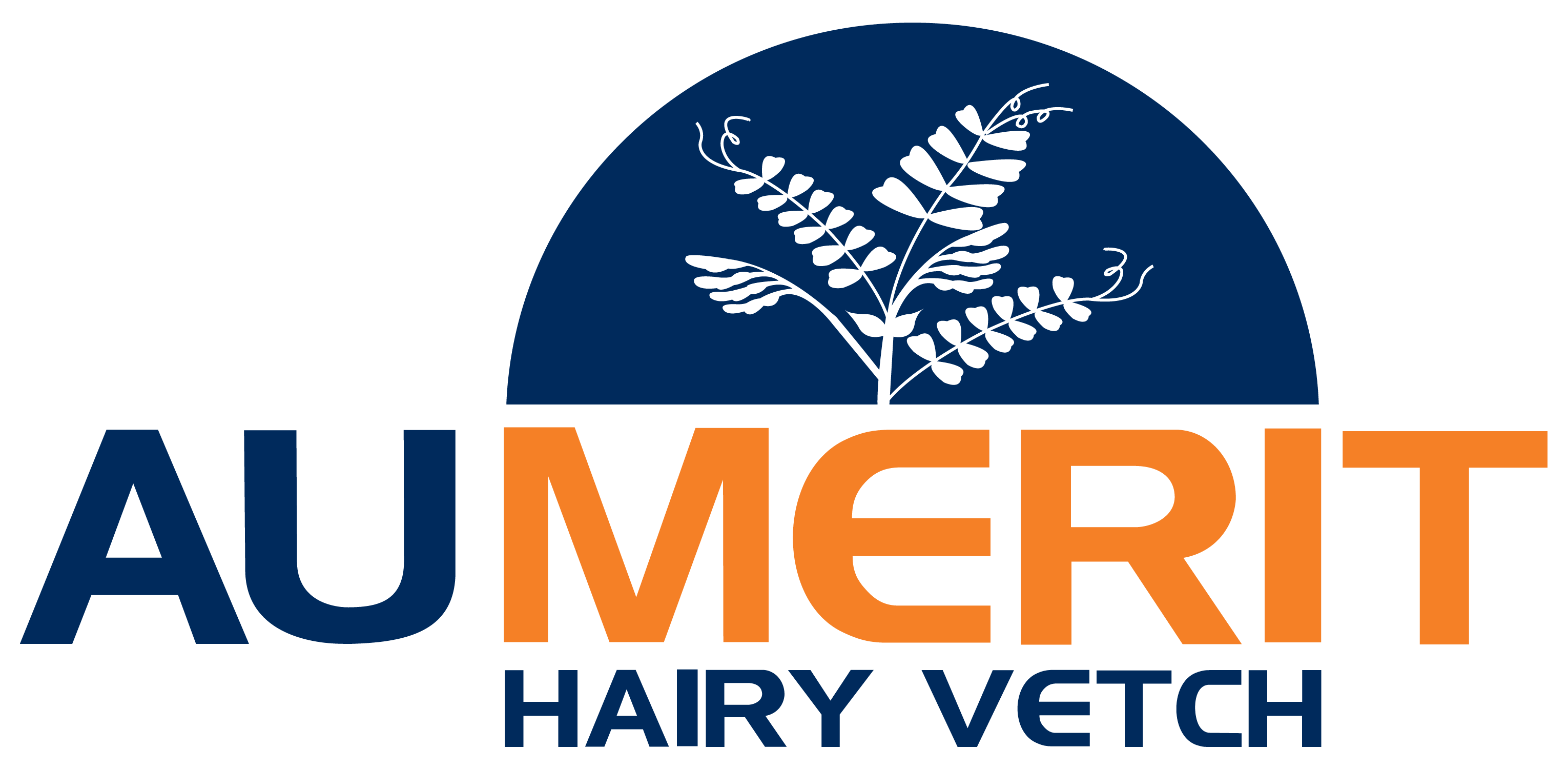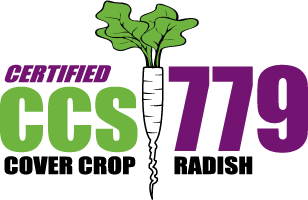
WinterKing
Hairy Vetch
Winter hardy. Later maturity. Abundant nitrogen.
A PVP protected variety which began with selection work by Steve Groff in E. PA, WinterKing demonstrates improved winter hardiness, delayed flowering and the capacity to produce large amounts of high-nitrogen biomass.
Find a dealerFeatures
Improved Winter Hardiness
Better winter hardiness equates to more biomass. More biomass provides increased forage for livestock, more biomass for cover croppers, and increased weed suppression for all. Those desiring high nitrogen-fixing legumes for green manure, forage grazing, wildlife and pollinator attractants should find WinterKing an improved option over other legumes that lack cold tolerance.
Delayed Flowering
As an annual legume, hairy vetch may need to be terminated either mechanically or chemically when followed by a row crop. Some producers may find the late maturity of WinterKing reduces the potential for undesired seed propagation found in earlier maturing cover crop varieties. For livestock producers, WinterKing’s late maturity means more vegetative high value feed longer into the spring season.
Nitrogen-Fixing
WinterKing has shown potential to produce 150-200#N/acre, especially when allowed to reach maturity later in the season. This is beneficial for green manure as well as providing an extended high-protein source for grazing livestock throughout the full spring season.
Cover Crop Performance
In the October of 2019, researchers with the University of Tennessee planted extensive cover crop trials in three Tennessee locations – Knoxville, Spring Hill, and Milan. In addition to assessments of nitrogen content and release, assessment were conducted for ground cover, biomass and height. The data below reflects averages of all three sites. Site-specific data and complete results available upon request.
University of Tennessee
Biomass, Canopy Cover, and Height
Three Location Average
|2019-2020
| Variety | Biomass (Tons DM/A) | Canopy Cover (%) | Height (in) | |||||
|---|---|---|---|---|---|---|---|---|
| April | May | Nov | Feb | Nov | Feb | April | May | |
| AU Merit Hairy Vetch | 1.2 | 2.3 | 7 | 75 | 4 | 6 | 14 | 23 |
| Patagonia Inta Hairy Vetch | 1.0 | 1.9 | 5 | 71 | 4 | 5 | 14 | 23 |
| Purple Bounty Hairy Vetch | 0.8 | 1.9 | 3 | 50 | 4 | 3 | 16 | 26 |
| Namoi Woolypod Vetch | 1.4 | 1.8 | 3 | 68 | 4 | 9 | 15 | 25 |
| WinterKing Hairy Vetch | 1.2 | 1.8 | 3 | 53 | 4 | 4 | 16 | 24 |
| Villana Hairy Vetch | 0.7 | 1.6 | 2 | 40 | 4 | 4 | 14 | 25 |
| Common Vetch | 1.0 | 3.0 | 3 | 45 | 4 | 8 | 12 | 18 |
| See complete trial here. | ||||||||
University of Tennessee
Nitrogen Content/Estimated Nitrogen Release
Three Location Average
|2019-2020
| Variety | Biomass (Tons DM/A) | Total Nitrogen (%) | Est. N Released: April Termination (lbs/ac) | Est. N Released: May Termination (lbs/ac) | ||||||
|---|---|---|---|---|---|---|---|---|---|---|
| April | May | April | May | 2 wks. | 4 wks. | 12 wks | 2 wks. | 4 wks. | 12 wks | |
| AU Merit Hairy Vetch | 1.2 | 2.3 | 4.1 | 3.9 | 3.0 | 7.0 | 44.3 | 5.3 | 12.3 | 91.7 |
| Common Vetch | 0.6 | 2.2 | 3.3 | 2.7 | 1.3 | 3.0 | 18.7 | 4.0 | 9.0 | 70.0 |
| Patagonia Inta | 1.0 | 1.9 | 4.0 | 3.5 | 2.3 | 6.3 | 37.0 | 3.7 | 8.3 | 62.7 |
| Villana Hairy Vetch | 0.7 | 1.6 | 3.8 | 3.5 | 1.7 | 4.0 | 25.3 | 3.3 | 8.3 | 61.7 |
| WinterKing Hairy Vetch | 1.2 | 1.8 | 3.9 | 3.4 | 3.0 | 6.3 | 40.0 | 3.7 | 8.3 | 61.7 |
| Purple Bounty Hairy Vetch | 0.8 | 1.9 | 4.0 | 3.0 | 2.0 | 4.3 | 29.0 | 3.0 | 7.3 | 53.3 |
| Namoi Woolypod Vetch | 0.8 | 1.5 | 3.8 | 3.3 | 1.7 | 4.0 | 27.0 | 2.7 | 6.0 | 46.0 |
| See complete trial here. | ||||||||||
Forage Quality
Louisiana State University
Hairy Vetch Evaluation Trial (Forage Quality)
Winnsboro, LA
|2017-2018
| Entry | NDF | ADF | CP |
|---|---|---|---|
| AU Merit | 0.52 | 0.38 | 24.31 |
| WinterKing | 0.49 | 0.36 | 22.93 |
| Oregon VNS | 0.50 | 0.37 | 22.47 |
| Villana | 0.53 | 0.39 | 20.8 |
| * results not evaluated for statistical difference | |||
Yield Data
Louisiana
Louisiana State University
Hairy Vetch Evaluation Trial (Forage Quality)
Winnsboro, LA
|2017-2018
| Variety | Harvest Date | ||
|---|---|---|---|
| Entry | March 27 | May 11 | Total |
| WinterKing | 1141 | 1983 | 3124 |
| Oregon Origin | 931 | 1907 | 2838 |
| Villana | 958 | 1678 | 2636 |
| Villata | 1067 | 502 | 1569 |
| Common Vetch | 1068 | 322 | 1391 |
| Naomi Wooly Pod | 1108 | ------ | 1108 |
| LSD | 221 | 488 | 597 |
Pennsylvania
Penn State University
Hairy Vetch Evaluation Trial
State College, PA
|2007-2008
| Entry | % Flowering | June 5th Harvest (DM/AC) |
|---|---|---|
| Groff Vetch 1 | 50.0 | 616 |
| AU Early Cover | 75.0 | 508 |
| Purple Prosperity | 50.0 | 359 |
| Purple Bounty | 53.3 | 192 |
| 1WinterKing is a further cycling of “Groff Vetch” | ||
| Seeded Sept 7, 2007 | ||
Planting
WinterKing hairy vetch can be seeded at a rate of 10-40 lbs/acre depending on the mix or purpose. For best results, plant 3-6 weeks prior to the average first killing frost. Ideal seeding depth: ½–1½".
| Planting Method | Drill, broadcast with light disking |
|---|---|
| Seeding Rate – Drilled (Pure Stand) | 15–20 lbs/ac |
| Seeding Rate – Drilled (In a Mix) | 10–15 lbs/ac |
| Seeding Rate – Broadcast (Pure Stand) | 25–40 lbs/ac |
| Seeding Rate – Broadcast (In a Mix) | 15–20 lbs/ac |
| Planting Dates | 3-6 weeks prior to the average first killing frost |
| Planting Zones (map) | green |
| Planting Depth | ½–1½" |
| Termination | Roll kill, selective or non-selective herbicide allows for no-till seeding into terminated stand. |

Contact Us
Unable to find a dealer? Have a question? Drop us a note using the form below.
We know that your time is valuable and are committed to responding promptly. That said, it may take us a day or two. In order to expedite your request, we may send your inquiry directly to one of our distributors or industry experts. Thank you!
More Cover Crop and Forage Solutions
Many innovative cover crop and forage solutions are available at SmithSeed.com and these product sites.







